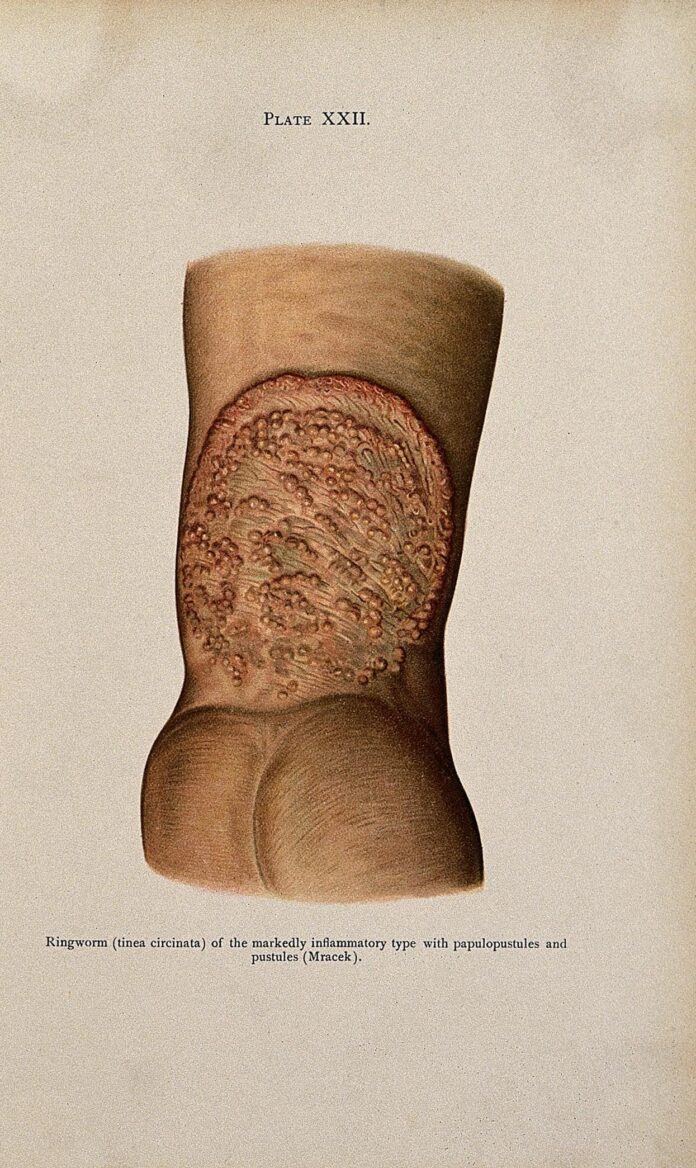
Ringworm is a common fungal infection that can affect the skin, scalp, and nails. It is highly contagious and can spread easily from person to person. Recognizing the symptoms of ringworm is important in order to seek treatment and prevent the spread of the infection.
This article will discuss the various symptoms of ringworm, including those that affect the skin, scalp, and nails. By understanding these symptoms, you can take the appropriate steps to address the infection and prevent it from spreading to others.
1. Red, Itchy Patch on the Skin
One of the most common symptoms of ringworm is a red, itchy patch on the skin. This patch may be round or oval in shape and can vary in size. It is often accompanied by itching, which can be quite intense. The affected area may also be inflamed and develop blisters.
If you notice a red, itchy patch on your skin that does not improve with over-the-counter treatments, it is important to see a doctor for an accurate diagnosis and appropriate treatment.
2. Scalp Ringworm
Ringworm can also affect the scalp, leading to symptoms such as red, scaly patches, hair loss, and itching. In some cases, the affected areas may develop raised, black dots, which are actually broken hairs. Scalp ringworm can be particularly challenging to treat, so seeking medical attention is crucial.
Parents should be especially vigilant for signs of scalp ringworm in their children, as it is common in kids and can spread easily in schools and daycare settings.
3. Ringworm of the Nails
Ringworm can also infect the nails, leading to a condition known as onychomycosis. Symptoms of nail ringworm include thickened, brittle nails that may become discolored or develop white or yellow patches. The nails may also become crumbly and may separate from the nail bed.
If you suspect that you have nail ringworm, it is important to seek treatment promptly to prevent the infection from spreading to other nails or to other people.
4. Ring-Shaped Rash
As the name suggests, ringworm often causes a ring-shaped rash on the skin. This rash may be red, scaly, and itchy, and it can be quite distinct in its appearance. The outer edge of the rash is typically redder and more inflamed, while the center may appear clear or even resemble healed skin.
It is important to note that not all cases of ringworm present with a ring-shaped rash, so other symptoms should also be considered when diagnosing the infection.
5. Bumpy Patches on the Skin
In some cases, ringworm can cause bumpy patches on the skin. These patches may be red, inflamed, and develop blisters or pustules. The affected skin may also feel warm to the touch and can be quite uncomfortable or even painful.
If you notice bumpy patches on your skin, especially if they are accompanied by itching or other symptoms, it is important to seek medical attention for an accurate diagnosis and appropriate treatment.
6. Swelling and Inflammation
Ringworm can cause swelling and inflammation in the affected area. This may make the skin appear red and feel warm to the touch. In some cases, the affected area may also become tender and painful, especially if blisters or pustules develop.
If you experience swelling and inflammation in conjunction with other symptoms of ringworm, it is important to seek medical attention for proper diagnosis and treatment.
7. Itchy, Flaky Scalp
Scalp ringworm can cause the scalp to become itchy and flaky. This can result in dandruff-like flakes and may also lead to dry, brittle hair. If left untreated, scalp ringworm can also cause hair loss in the affected areas.
If you experience persistent itching and flaking of the scalp, especially if it is accompanied by other symptoms such as red, scaly patches, it is important to seek medical attention for a proper diagnosis and treatment.
8. Circular Patches of Hair Loss
Scalp ringworm can cause circular patches of hair loss on the scalp. These patches may be red and inflamed, and the skin may appear scaly and feel itchy. If left untreated, the hair loss may become more extensive, leading to larger bald patches on the scalp.
If you notice circular patches of hair loss on your scalp, especially if they are accompanied by other symptoms of ringworm, it is important to see a doctor for an accurate diagnosis and appropriate treatment.
9. Discolored, Brittle Nails
Nail ringworm can cause the nails to become discolored and brittle. They may develop white or yellow patches and may become thickened or crumbly. In some cases, the nails may also separate from the nail bed, leading to discomfort and potential infection.
If you notice changes in the color or texture of your nails, especially if they are accompanied by other symptoms of ringworm, it is important to seek medical attention for a proper diagnosis and treatment.
10. Unexplained Skin Changes
If you notice any unexplained changes in your skin, such as red, itchy patches, bumpy areas, or a circular rash, it is important to consider the possibility of ringworm. This is especially true if the symptoms do not improve with over-the-counter treatments for conditions such as eczema or psoriasis.
If you suspect that you have ringworm, it is important to seek medical attention for an accurate diagnosis and appropriate treatment to address the infection and prevent it from spreading.












